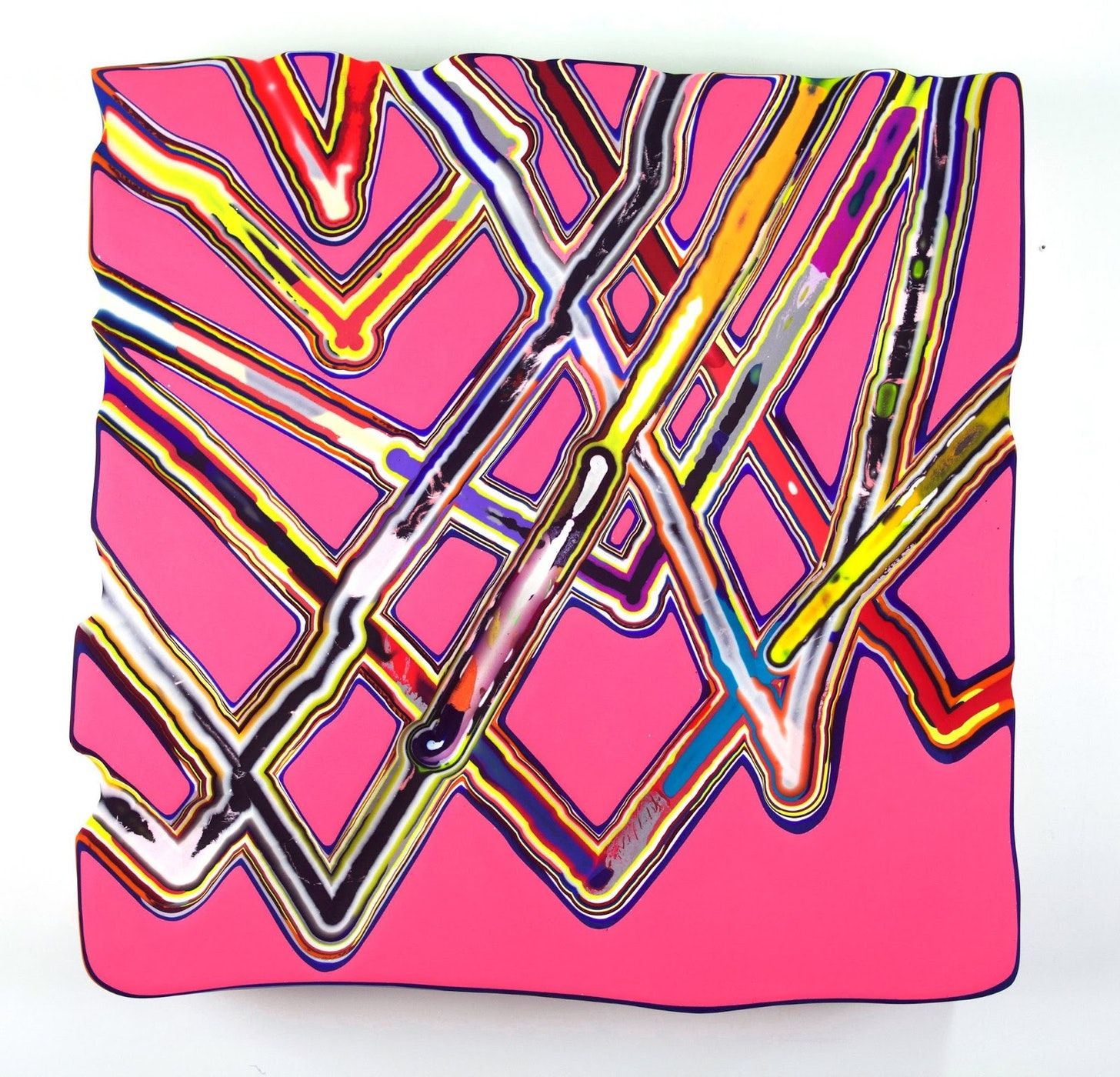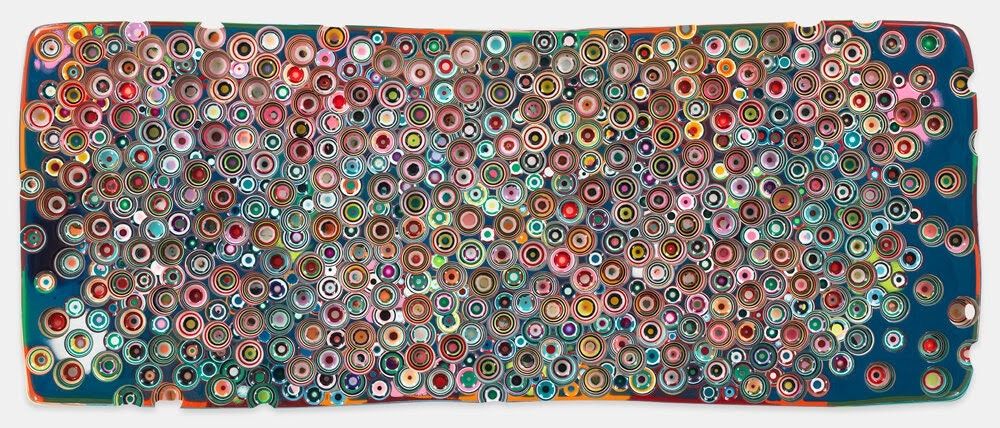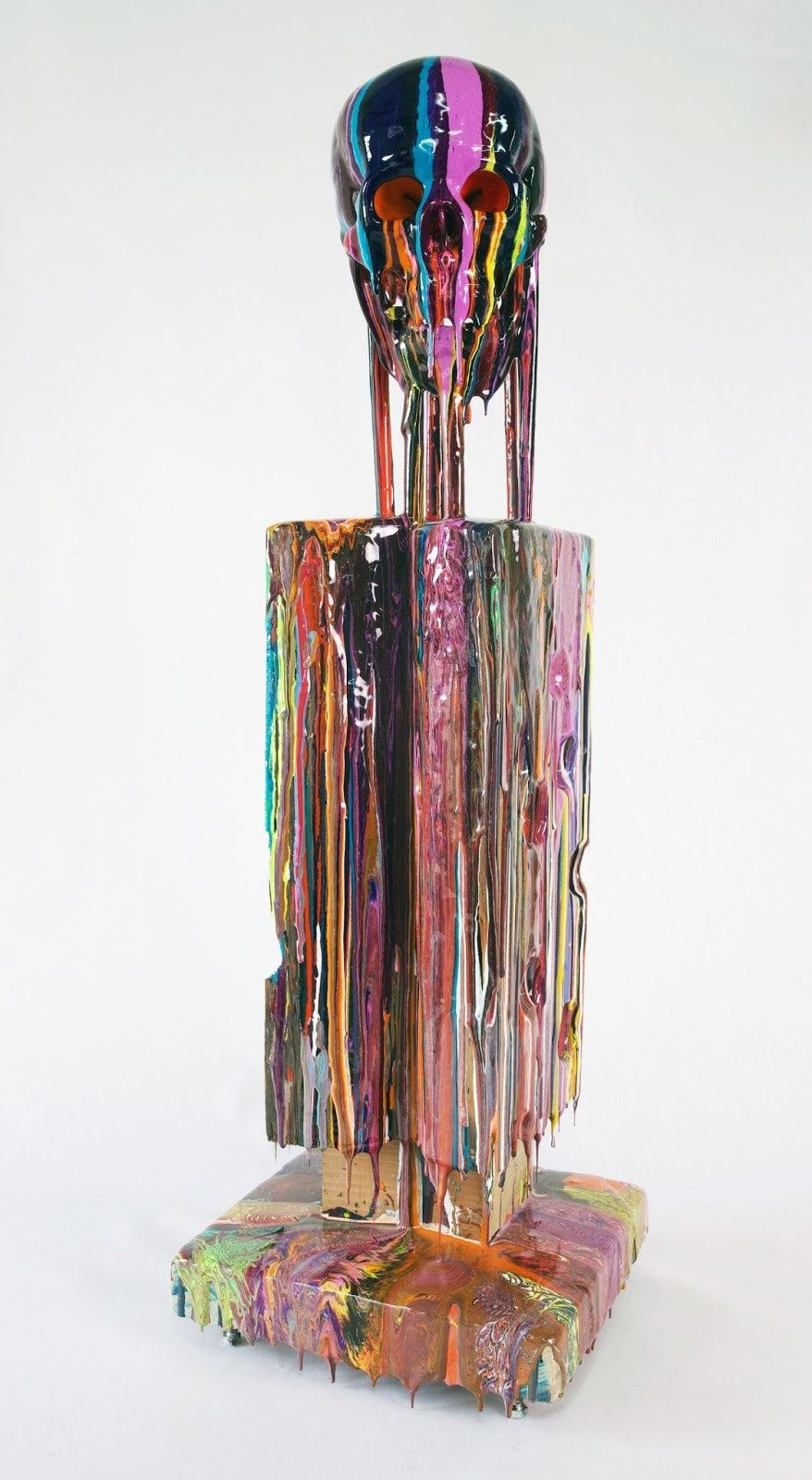Dear Johnny Adimando
Estimated reading time: 4 minutes, 7 seconds. Contains 824 words -------------------------------------------------------------------------------- Long time no see


Estimated reading time: 4 minutes, 15 seconds. Contains 853 words
Content Warning: Some of the artwork included in this article may trigger what is known as trypophobia, the unconscious fear, discomfort, and anxiety experienced when seeing groupings of small holes or hole-like dots packed together. There are three images in this article in total, and the particular artwork associated appears second. Two divider lines will appear before the image when scrolling down to provide readers with a heads-up.
Dear Markus,
I wish there were more artists out there that nailed neon colors on skulls just right like you do. If I could have human-sized skulls dripping with paint all across my lawn instead of pink flamingos, by god I would do it.
I’ve had a book on Markus Linnenbrink’s artwork since 2019, when it was donated along with other related books to my workplace. They were essentially up for grabs, and I immediately gravitated towards his hyper-saturated color lines and electric blue and pink pigments on the cover. The more I flipped through the pages, the more I drank in just how mind-bogglingly vibrant his work was. How on earth were these works even possible…?
Linnenbrink is a German-born artist and sculptor, currently living and working in Brooklyn, NYC. His pieces reside in several international institutions, including Borusan Contemporary, Turkey, Kunstsammlung der Ruhr-Universität Bochum, Germany, Miles McEnery Gallery, New York, New Art Projects, London UK, and more. (1) Much of his process channels inspiration from the color field painting movement of the 1940’s and 1950’s (2), putting layers and layers of saturated paint and epoxy resin on top of one another. After the layering is complete, Linnebrink cuts and drills into the surface to reveal the layers of glossy color underneath in electric patterns unique to each piece. In his many bodies of work, the pieces are categorized appropriately in groupings such as Cuts, Drills, and Drips. The drip paintings are, as one can imagine, works in which the pigment was allowed to flow down the surface freely. The surfaces range from flat to everyday objects such as chairs.

...Layers and strata are things that pop up in life everywhere. Archeology is layers of lived lives and passed time on top of it. Which is what I create with my paintings. I put all these layers together and then I forget about them. One layer is reacting to the layer underneath, but ten layers before that is almost forgotten. In the end I create something that is also surprising me, even though I am the creator.
...The dialogue of color is what drives my work. […] If you go back in history the painters that do it the best are the most fascinating. You could argue that it is too much and that I give too much information, but the energy of color translates into something that is physical.... - abstractionroom.org
Much like what I discussed with Jadé Fadojutimi’s work, I always find it refreshing when artists treat the medium and the pigments themselves as the core subject of the art. No subject matter is necessarily superior over the other when it comes to art, but there’s something to be said about the joy that comes from seeing what two or three colors look like stacked next to one another. It’s a special kind of problem-solving, where the equation is akin to “pink + blue + brown = what kind of visual effect?”, and part of that joy is figuring out what that effect will be. Linnenbrink started much of his carving work by seeing a neighbor of his have certain power tools, and wanting to know what would emerge if he took a small saw into the layers of paint and resin. (3) To compare representation and abstraction would be like comparing apples to oranges, so I don’t even dare. But sometimes it is one thing to create a similar replica to what you see, and it’s another to create that thing yourself.

Of course, as someone who’s a die-hard fan of the macabre, I couldn’t not let this article get published without a shout-out to his skull series. Utilizing a life-sized imitation skull meant for the classroom, he paints it a solid color before applying his drip technique. What’s so fabulous about a piece like this is not only is it a striking contemporary addition to the classic genre of memento mori, but also the true expression of just being experimental and colorful for the sake of...experimentation and color. Much of Linnenbrink’s sculptural work feels like a natural continuation of his more ‘2D’ collections, pushing the boundaries of what paint can do and where it can go. When you’ve found ways to take color field painting to the extreme, why stop at the flat surface?
I’m so thankful for work like Linnenbrink’s. It makes me feel incredibly validated in my healthy obsession with hyper-saturation. When the world feels bleak, I know I can look at a thick, neon pink, carved epoxy resin paint rectangle to give me a good shot of serotonin.
-Sasha
instagram.com/markuslinnenbrink